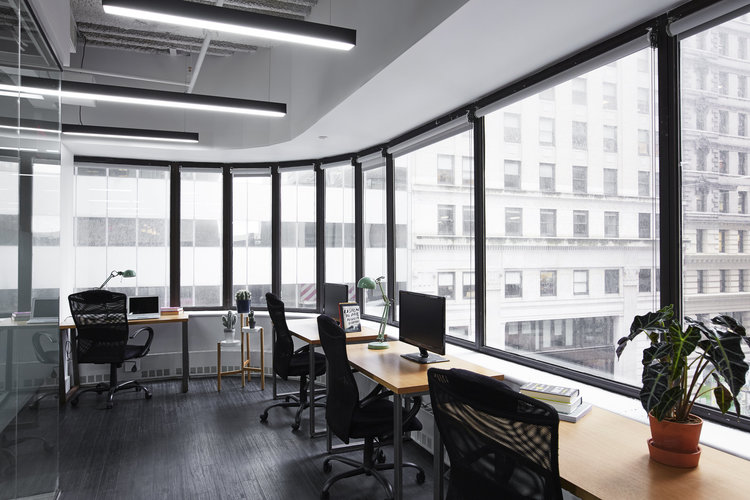By Bond Collective Staff
If you’ve got a great idea and want to build a business around it, you might consider creating a stealth mode startup. But what is a stealth mode startup? How is it different than a regular startup?
In this article, we’ll answer those questions and reveal the benefits and drawbacks of operating in secrecy.
What Is A Stealth Mode Startup?
A stealth mode startup, as its name indicates, is a fledgling business (a startup) working to bring a new product or service to market under a temporary state of secrecy (stealth mode).
At the most basic, there are two types of stealth mode:
-
Total stealth mode
-
In-company stealth mode
Total stealth mode is when a company tries to keep all of its actions as secret as possible. To that end, the company may mislead the public about its true goals. It may maintain a website that doesn’t disclose its personnel or location.
It may even operate under a temporary name that doesn’t disclose its field of business. If you’re considering whether or not to create a stealth mode startup, this is the type of stealth mode you would operate under.
In-company stealth mode is when an existing business tries to keep a new project or idea as secret as possible until it’s time for release. Microsoft, for example, has a long history of assigning codenames to various projects — Windows 95 was Chicago, Windows Vista was Longhorn — in order to keep scrutiny at a minimum.
This secrecy often extends beyond just the public eye. In-company stealth mode keeps internal and external stakeholders at bay and often prevents premature dismissal of a concept or idea. A business operating under in-company stealth mode may do many things to keep their activities under cover, including:
-
Covert testing
-
Building a cover story
-
Freeing up extra resources in order to maintain secrecy
-
Engaging informal sponsors
-
Requiring project employees to sign another non-disclosure agreement (NDA)
If you’re an entrepreneur just getting your startup off the ground, you likely won’t need this type of stealth mode until much later, when your company starts working on its next offering.
Benefits Of Stealth Mode
1) Protects Intellectual Property
If you’ve got a drastically new product or service and you need time to get it right, you may be better served with a stealth mode startup. That way, you can protect your intellectual property without worrying that someone else will swoop in and steal it out from under you.
Some startups operate in this way for years (one even for the better part of a decade) in order to perfect their flagship product before taking it to market.
2) Allows You To Be Anonymous Until You’re Ready
Being in the public eye can distract to your team and hurt your business. If you want to focus on just your product or service without worrying about variables like branding or public relations, a stealth mode startup may be your best strategy.
This allows you to do things like solidify strategy and add new capabilities while minimizing the need for (and cost of) more public-facing activities.
3) Lets You Control Your Press
When your startup is in stealth mode, it probably won’t get much press. But that can be a good thing — it’s another way to keep your activities out of the public space.
It also means that you have more control over what potential customers and investors see. With the ubiquity of social media platforms like Facebook, Twitter, Instagram, and even LinkedIn, generating your own press is probably one of the easiest things to do these days.
Drawbacks Of Stealth Mode
1) Impedes Finding The Right Market Fit
A stealth mode startup makes it more difficult, if not impossible, to find the right market fit for your product. You may think that your market is everyone. But, in reality, your ideal market is much narrower than that and requires a different variety of branding and marketing.
How are you going to know that if you run a stealth mode startup? You can’t test your product without revealing it at least partly to the world, and that would defeat the purpose of a stealth mode startup.
2) Limits Feedback
Gaining feedback about what works and what doesn’t is essential to the success of certain products. But running a stealth mode startup, by its very nature, limits the amount of feedback you can receive.
For some startups, this may not be a problem. But for others, it could mean the difference between staying in business and closing the doors for good.
3) Prevents Pre-Buzz
Creating pre-buzz (generating excitement for your product or service before it debuts) is relatively easy to do when you run a regular startup. But when you run a stealth mode startup, you have to keep your activities as far under the radar as possible. That means no pre-buzz.
And while that might sound okay even if you’re running a regular startup, this lack of excitement can have a significant impact on customer, developer, and investor receptivity.
When To Launch A Stealth Mode Startup
1) You Already Have A Firm Market Fit
If you already have a firm market fit for your product or service, a stealth mode startup can be a good choice.
For example, if you’re launching a product that is an improvement on (or slightly different from) an existing product, you should already know what the market is — the previous product defined it for you — so being secretive can play to your advantage.
2) You Need Time To Work Out New Technology
If your product is heavily tech-centric, it might require a substantial amount of time to perfect. And if the word got out about what you were doing, larger companies with more resources (think Apple, Google, and Microsoft) might take your idea, throw more money and manpower at it, and get it to market faster.
Operating a stealth mode startup gives you a head start on the major players in your niche. Then when you do roll out your product, the big companies will have to pay to acquire it rather than developing it themselves.
3) You Have A Truly Disruptive Startup
Very few products are truly disruptive in the sense that they cause a revolution in an industry or change the world. If you’re struggling to come up with some truly disruptive brands, think Walmart, McDonald’s, Facebook, Amazon, and Uber.
Sure, your product might be awesome, interesting, or a unique take on an industry leader, but is it really and truly disruptive like the Apple iPhone or Netflix’s streaming service? If it is, then by all means, launch a stealth mode startup.
The Best Place To Run A Stealth Mode Startup
If you’re like most entrepreneurs starting a business these days, you have very little money to work with (at least at first). That’s why it’s vital to preserve what capital you do have.
Rather than renting an expensive, standalone space or getting shackled with a long-term lease, the best place to house your stealth mode startup is in a coworking space.
This type of flexible office environment gives you everything you need — technology, infrastructure, furniture, amenities — to get the job done right and allows you to focus on your work rather than day-to-day operations.
A coworking space also provides the means to keep your business as secret as you need it to be. You can work from a hot desk (a first-come-first-served area), a dedicated desk, a private office, or a suite of offices.
In addition, a coworking space helps you save money. Membership at a coworking space, like Bond Collective, is a fraction of what you would pay to maintain your own office. Plus, you can change your membership from one month to the next. Work from a dedicated desk in May, switch to a private office in June, and go back to a dedicated desk in September. This allows you to expand and contract your workspace as your needs dictate.
All of those factors — and many more — make a coworking space the ideal place to build your stealth mode startup.
To learn more about how coworking space benefits startups, small businesses, remote workers, and companies of all sizes, visit BondCollective.com today.






